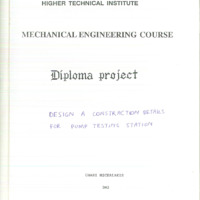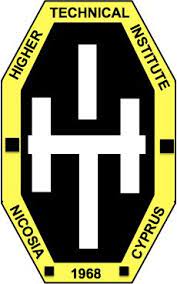Design a construction details for pump testing station
- Τίτλος
- Design a construction details for pump testing station
- Θέμα
- Pumping machinery
- Pumping machinery--Testing
- Δημιουργός
-
Michalakis, Chari
- Πηγή
- Higher Technical Institute
- Το πλήρες κείμενο είναι διαθέσιμο από το Υπουργείο Ενέργειας, Εμπορίου Βιομηχανίας και Τουρισμού
- Εκδότης
- Library of Cyprus University of Technology
- Ημερομηνία
- 1989
- Δικαιώματα
- Απαγορεύεται η δημοσίευση ή αναπαραγωγή, ηλεκτρονική ή άλλη χωρίς τη γραπτή συγκατάθεση του δημιουργού και κάτοχου των πνευματικών δικαιωμάτων.
- Μορφή
- Γλώσσα
- en
- Τύπος
- text
- Αναγνωριστικό
-
MED0005
- Σύνοψη
-
Man's progress from prehistoric ages to his present civilization has been accompanied by an ever increasing use of water, which frequently had to be lifted from a lower to a higher level. This of necessity led to the early development of various forms of pumping equipment.
The "Shadoof" or cup-shaped pot mounted on the end of a counter-weighted arm is the forerunner of all pumps, invented by the Egyptians somewhere around 2000 B.C. Also bucket-lift principle was developed into multi-bucket systems and the paddle wheel configuration with diameters up to 10 metres or more to obtain the required lift.
Around 1000 B.C, or slightly later, the Archimedean screw form of pump appeared (actually developed in Egypt again, not invented by Archimedes himself) and with the spiral made from leather wrapped around a wood spindle. The concept is exactly the same as the modern Archimedean screw pump, except that it appears mainly to have been used in fully enclosed form with a circular surrounding casing constructed of wood.
Then, in Roman times, the first reciprocating appeared (250-0 B.C) and this remained the main pump type in use for several centuries, operated by hand, animal, water or wind power. Right up until the latter part of the last century the reciprocating pump dominated the field, simply because there were no real alternatives. It was developed in increasing sizes and increasing efficiencies, first driven by beam engines and later at higher speeds by much more efficient reciprocating steam engines.
The latter part of the nineteenth century proved particularly significant with the development of the steam turbine as a highspeed, high-power source, and the first turbine or centrifugal pump, built by Osborne Reynolds in 1875. The two went together. The centrifugal pump was more compact, with only rotary rather than reciprocating motion involved. As a consequence it could readily be driven faster that a reciprocating pump. No longer was it necessary to build a bigger pump to produce a greater delivery. Nevertheless the appearance of the centrifugal pump, and subsequently mixed flow and axial flow derivatives, sounded the death knell of the reciprocating pump where large volumes of water had to be dealt with. Then, with the appearance of the electric motor as an alternative source of pump power the centrifugal pump really come into its own, in an even wider of sizes and designs for a variety of different duties. On the other hand the reciprocating pump did fight basis to some extent with the direct-acting dumlex and triplex pumps. Also where quantities required are small and pressure required are high, the reciprocating pump is far superior to the centrifugal. Thus it retains its status in quite different fields of application.
In the meantime, various other types of rotating or rotary pumps had been designed, tried and mostly failed to find any real practically application. Around 1580 the sliding vane pump was invented by Ramelli and the year pump by Serviere in 1593. Both are now standard types of rotary pumps with positive displacement characteristics. The other main types, the screw pump, appeared much later. It was invented by Revillion in 1830. The electric screw pump, or original Mono pump, took a further century to appear.
Further types of pumps followed through logical development, together with others exploiting new or otherwise original principles. The likelihood of any radically new type of pump being developed appears remote. It would need to employ quite new principles to complete with the performances and efficiencies achieved by present day pump designs. That is not to say there will be no new designs of pumps. Most certainly there will, but their success will be fudged by their cost-effectiveness. Equally the performance of known types of pumps continues to be improved upon, and in particular cases their range of applications extended. When the peristaltic pump first appeared, for example, few people would have visualized its successful development into a pump for handling slurries of high specific gravity on a cost-effective basis.
- Πολυμέσα
-
 MED 0005.pdf
MED 0005.pdf
Τμήμα του Design a construction details for pump testing station


